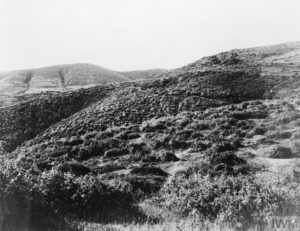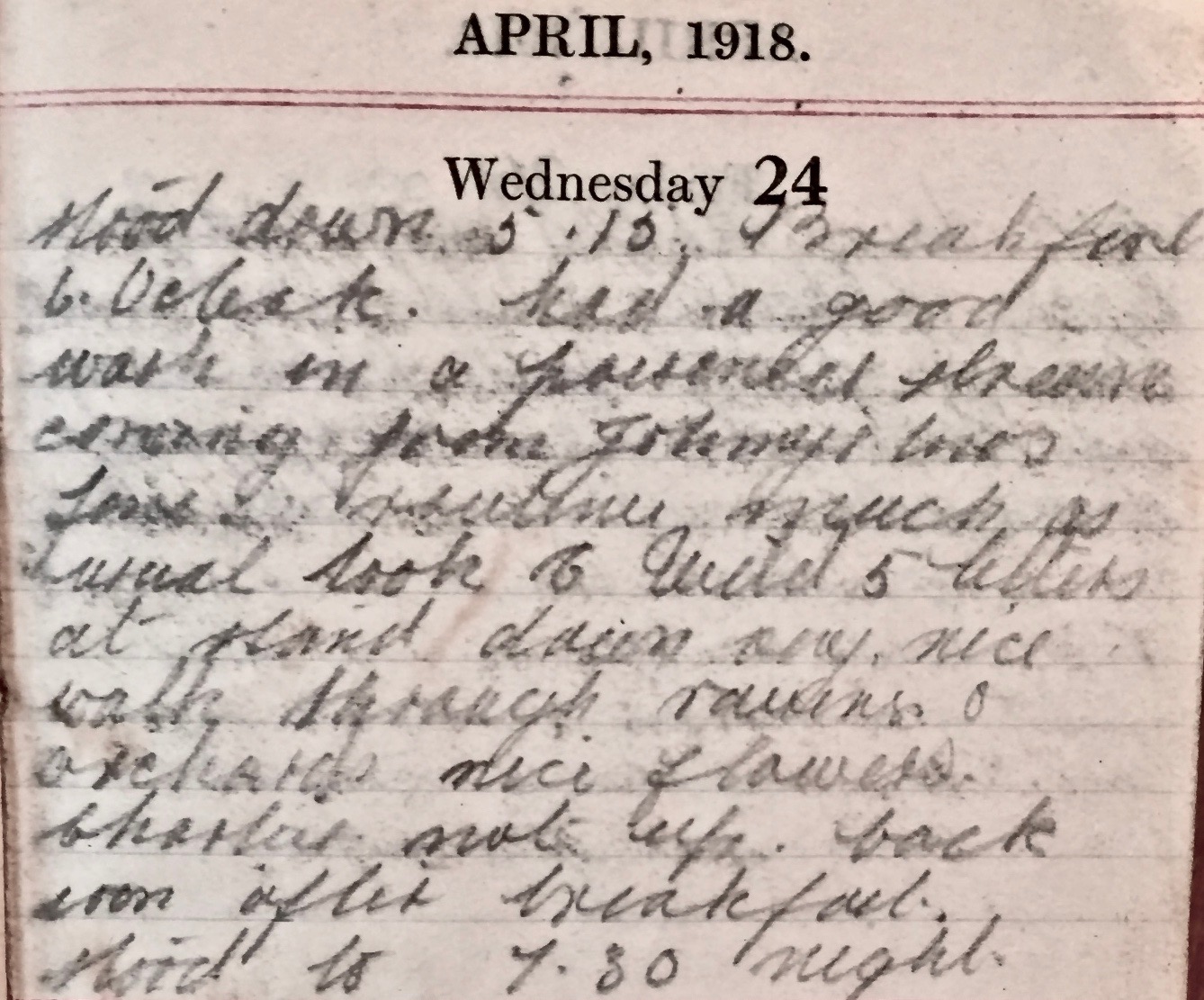Wednesday April 24th, 1918
Stood down 5:15. Breakfast 6 o’clock. Had a good wash in a poisonous stream coming from Johnny’s line. Routine much as usual. Took C Wild five letters at stand down. Very nice walk through ravine and orchards. Nice flowers. Charlie not up. Back soon after breakfast. Stood to 7:30 at night.
Washing in a Stream
The British troops predilection for keeping clean has been well documented by many commentators and reported elsewhere in this blog. Even so, it seems strange that Frank would enjoy a wash in a ‘poisonous stream coming from Johnny’s lines’.
Flowers

All the photographs of the countryside in Macedonia look rather bleak and barren, not helped obviously by the fact that they are in black and white. Here, by way of example, is a panorama of the hills of Doiran. However, many commentators who were in the region during the war commented on the proliferation and the beauty of the flowers, especially in spring time. Frank joins their ranks today.
G Ward Price, the American newspaperman, wrote, ‘There is one sector of the Balkan front that I have not yet mentioned, but of which I always think with pleasure, partly perhaps because I only visited it under the beautiful conditions of early summer, when the Struma valley for a few brief weeks is one of the loveliest places in Europe. … Above all, poppies. Millions of crimson wild poppies, great fields of heavy white opium poppies. Unless you have seen the Dutch tulip fields in spring, you can hardly realise the masses of solid colour made by these fragile flowers of the Struma. You ride up to the horse’s belly in flowers, and heavy, seductive scents rise up from the petals you trample down. But a week or two later the hot sun has shrivelled everything, and only a waste of burnt yellow vegetation remains.’¹
Staff Sergeant William Lee of the RAMC even tried to send some home, unfortunately with little success, ‘The district abounded with wildflowers and I made a small collection such as one could keep at hand in a small cardboard box. Later I sent these home but they must have arrived in fragments for my Father thought I had sent them for seed and planted the mass, but not a plant resulted.’³
13th (Service) Battalion War Diary – 24th April 1918 – Crow Hill
Our artillery was moderately active, they registered our outpost barrage. From 08:50 to 10:10 hrs enemy fired 34 – 77mm shrapnel on to Glengarry, 6 on Col Post and remainder on AH 14 and CT AH 14, our working parties by day on these posts must have been seen. They had to come in. There was aerial activity on both sides but enemy planes did not approach our lines.
A patrol of 1 NCO and 6 OR visited the spot on Goldies I where the enemy was seen on the night 22/23rd it then worked round to forward slope to the spot where a proclamation had been put out. The proclamation was gone, and 15 yards away, a wire wrapped around bushes to form a trip wire was found, the end of the wire was bent to form a hook and two feet away from it was a bomb (with handle). Patrol visited Ham Ravine and sangar on Goldies I without result.
Another patrol of 2 NCO and 6 OR moved to the SW corner of Dautli and lay up for half an hour. At 22:00 hrs it moved carefully through village to NW corder and posted proclamation on an isolated house facing enemy lines. At 22:30 hrs mules and wheeled transport were heard in direction of White Pillar Ridge, otherwise nothing seen or heard of the enemy. Work appears to be going on on Devedzelli Spur as heaps of stone there have greatly diminished. Visibility all day was high. Copy of Interrogatory of two Bulgar prisoners and map of enemy dispositions are attached (Appendix No 5).
References & Further Reading
¹ ‘The Story of the Salonica Army’ 1915-1917 by G. Ward Price (an American war correspondent) . Written mid-1917.
² ‘Archibald Don – A Memoir’ (1890-1916) from a collection belonging to Salonika Campaign Society
³ ‘Expenses Paid’ by Staff Sgt William J Lee, RAMC (1915-1919) from the collection of Salonika Campaign Society. Page 25, whilst serving at 21st Stationary Hospital
* Q69025, copyright Imperial War Museums


